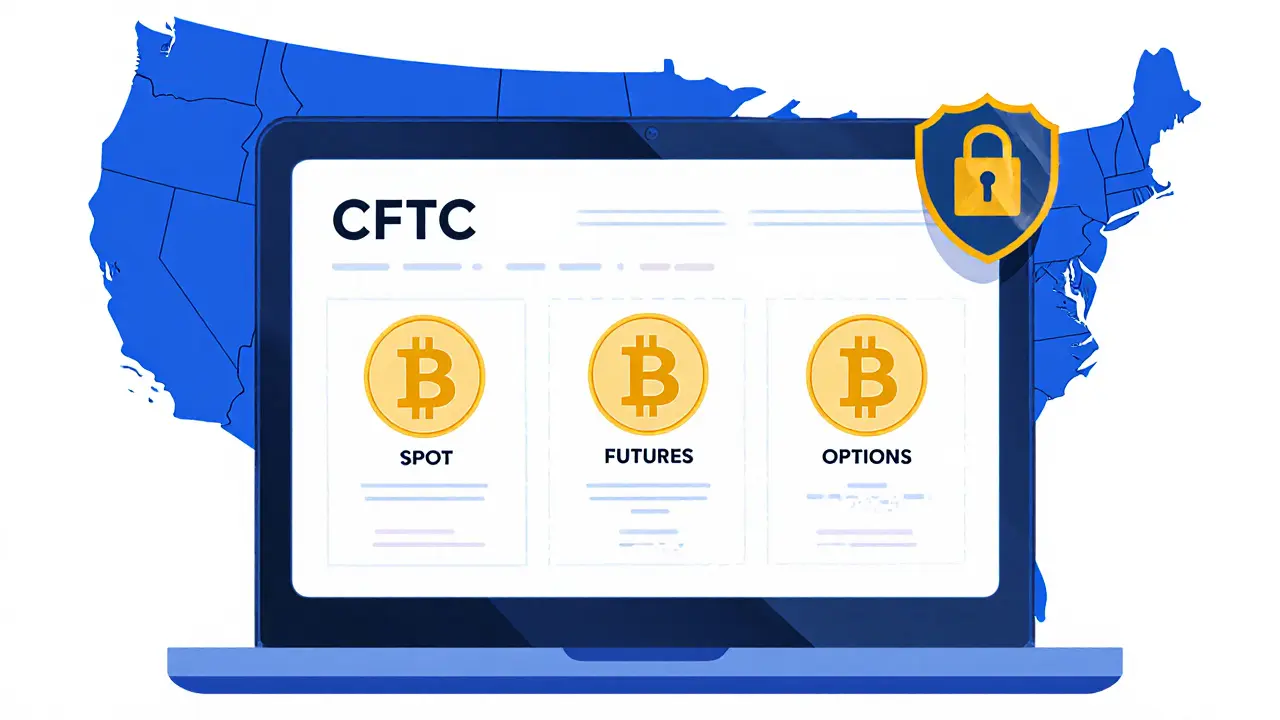CFTC Regulated Crypto: Understanding the Landscape
When dealing with CFTC regulated, any crypto asset or service that falls under the jurisdiction of the U.S. Commodity Futures Trading Commission (CFTC), it's essential to know why the label matters. Also known as CFTC oversight, this classification signals that the asset is treated like a commodity futures contract, meaning it must follow strict reporting, clearing and market‑surveillance rules. Commodity Futures Trading Commission (CFTC)the federal agency that enforces commodity and derivatives laws in the United States writes the rulebook, while crypto derivativesfutures, options and swaps built on digital assets become the primary products that need compliance. Finally, regulatory compliancethe set of procedures and controls required to meet CFTC standards determines whether an exchange can legally offer those products to U.S. users.
Why CFTC Regulation Impacts Every Crypto Player
First, the CFTC treats many cryptocurrencies as commodities, so any platform offering futures or options on those tokens must register as a futures commission merchant (FCM) or a designated contract market (DCM). That registration brings obligations like maintaining adequate capital, filing regular financial reports, and submitting trade data to the agency. Second, the agency’s enforcement actions—such as fines for wash trading or market manipulation—shape how exchanges design their order‑book logic and surveillance tools. Third, compliance influences the user experience: traders in the U.S. often see additional KYC steps, tighter position limits, and transparent margin requirements because the CFTC wants to protect investors and keep markets orderly.
Second, the ripple effect reaches developers and token issuers. If a new token wants to be listed for futures trading, its creators must ensure the token meets the CFTC’s definition of a commodity and that the underlying market can provide reliable price feeds. Without that, the token may only be tradable spot‑only, limiting its liquidity and appeal to institutional players who favor regulated derivatives for hedging. This creates a clear semantic link: CFTC regulated → crypto derivatives → institutional adoption. The chain explains why many projects prioritize listing on regulated exchanges before launching complex products.
Third, the U.S. crypto market itself evolves around this regulatory framework. Investors looking for low‑risk exposure gravitate toward platforms that publicly demonstrate CFTC compliance, because the agency’s oversight reduces the chance of hidden fraud. Meanwhile, non‑U.S. traders often watch U.S. enforcement trends to gauge global regulatory sentiment. As a result, a single agency’s rules can shape global product design, data‑sharing standards, and even the way wallets handle settlement for futures contracts.
Finally, practical steps for anyone navigating this space become clearer. If you’re a trader, check whether the exchange advertises its CFTC registration number and offers transparent reporting of open interest and volume. If you’re a developer, build in audit trails that satisfy the agency’s record‑keeping requirements. And if you’re a compliance officer, stay current on the CFTC’s annual guidance updates—especially around emerging topics like decentralized finance (DeFi) derivatives, which the agency is beginning to address.
All these pieces—regulatory bodies, product types, compliance procedures, and market behavior—interact to form a cohesive ecosystem. Below, you’ll find a curated list of articles that dive deeper into specific aspects: from exchange reviews that highlight CFTC compliance status, to guides on how crypto derivatives work under U.S. law, and analyses of recent enforcement actions that shape the market today. Use these resources to sharpen your understanding, stay compliant, and make smarter decisions in the ever‑changing world of CFTC regulated crypto.

